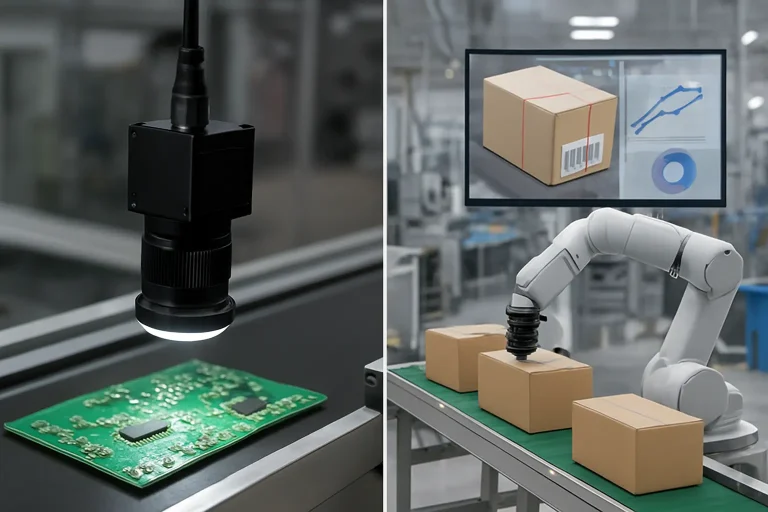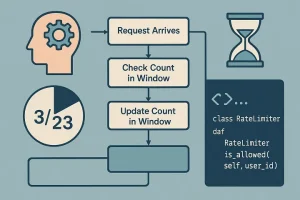Breakthrough in Machine Vision Algorithms: Transforming the Future of Automation
Machine vision has rapidly evolved over the past decade, fundamentally reshaping industries ranging from manufacturing to healthcare. At the heart of this transformation lies breakthroughs in machine vision algorithms, which have ushered in unprecedented levels of accuracy, speed, and functionality. These advances are not only enabling machines to “see” and interpret the world better than ever before but are also creating new opportunities for automation, quality control, and decision-making.
In this article, we will explore the latest breakthroughs in machine vision algorithms, their impact across different sectors, and what the future holds for this dynamic technology.
Understanding Machine Vision and Its Core Algorithms
Machine vision refers to the use of algorithms and camera systems to enable computers and robots to interpret visual information. Unlike traditional image processing, which might rely on simple rules or templates, modern machine vision algorithms employ sophisticated techniques such as deep learning, neural networks, and advanced pattern recognition to make sense of complex scenes.
These algorithms typically involve several key steps:
- Image Acquisition: Capturing high-quality images or video streams with sensors.
- Preprocessing: Enhancing images by reducing noise or correcting distortions.
- Feature Extraction: Identifying important elements such as edges, textures, shapes, or colors.
- Classification and Analysis: Interpreting features to detect, recognize, or measure objects.
- Decision Making: Generating outputs or triggering actions based on the analysis.
Traditionally, machine vision algorithms were rule-based and required extensive manual engineering, limiting their adaptability. However, the latest breakthroughs leverage AI-driven approaches that enhance performance and reduce dependency on human input.
Breakthroughs in Machine Vision Algorithms
Deep Learning and Convolutional Neural Networks (CNNs)
One of the most significant breakthroughs has been the integration of deep learning, especially convolutional neural networks, into machine vision. CNNs excel at automatically learning hierarchical features from raw images, enabling machines to recognize complex objects and patterns that were previously difficult to identify.
In practice, this means machine vision systems can now:
- Distinguish between subtle differences in surface defects on manufacturing lines.
- Interpret facial expressions or emotions in security applications.
- Identify and classify medical images with accuracy comparable to human specialists.
Real-Time Processing and Edge AI
Recent advancements in algorithm optimization and hardware acceleration have made real-time machine vision possible even on edge devices. This breakthrough enables faster decision making without the need to send data to the cloud, promoting privacy and reducing latency.
For example, autonomous vehicles rely on real-time machine vision algorithms that process camera feeds instantly to detect pedestrians, traffic signs, and obstacles.
Multi-Modal Vision and Sensor Fusion
Another development is the combination of multiple types of sensors, such as RGB cameras, thermal cameras, and LiDAR, processed through integrated machine vision algorithms. This fusion provides a richer understanding of environments, improving accuracy under challenging conditions like poor lighting or adverse weather.
Explainability and Trustworthiness
As machine vision algorithms become more embedded in critical systems, there is growing research on making these models interpretable and trustworthy. Explainable AI methods now help developers understand how decisions are made, real-time diagnostics identify failures, and bias mitigation strategies improve fairness.
Industrial and Practical Applications
Manufacturing and Quality Control
Breakthroughs in machine vision algorithms have revolutionized automated inspections on production lines. High-speed cameras combined with AI detect defects, measure components, and verify assembly with near-perfect accuracy, greatly reducing waste and downtime.
Healthcare and Medical Imaging
Advanced algorithms facilitate the interpretation of X-rays, MRIs, and histopathology slides. For instance, machine vision can highlight anomalies in scans that are challenging for human radiologists to spot, supporting early diagnosis and personalized treatment plans.
Agriculture and Food Industry
Machine vision algorithms help in sorting fruits, detecting diseases in crops, and monitoring livestock health. Precision agriculture benefits from these technologies through automated drones and robots that optimize resource use.
Security and Surveillance
Facial recognition, anomaly detection, and crowd analytics have improved tremendously with modern machine vision algorithms, bolstering public safety with enhanced accuracy and responsiveness.
The Future of Machine Vision Algorithms
As computing power increases and datasets grow, we can expect even more sophisticated algorithms capable of 3D scene understanding, better contextual reasoning, and adaptive learning that responds to dynamic environments. Integration with other AI domains like natural language processing could also enable machines to not only see but understand scenarios in human-like ways.
Moreover, increased adoption of edge computing will make smart vision ubiquitous across mobile devices, robots, and IoT sensors, democratizing access to intelligent visual perception.
Conclusion
The recent breakthroughs in machine vision algorithms mark a pivotal moment in technology, opening doors to smarter, faster, and more reliable visual understanding by machines. These advances promise to enhance efficiency, safety, and innovation across myriad fields, underscoring the powerful potential of machine vision in the era of automation.
By continuing investment in research and ethical implementation, the future of machine vision is bright, with transformative impacts only just beginning to take shape.




